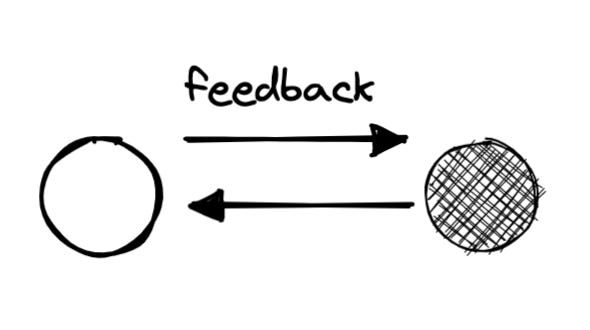Hi there! 👋🏽
Welcome to a new issue of leadingIn.tech newsletter. I'm Roberto, and this is a place where I share ideas, practices, learnings towards the journey of becoming a better leader in technology.
This is the second issue of the series dedicated to the book The Art of Leadership: Small Things, Done Well by Michael Lopp. On the previous issue I covered the first Act of the book dedicated to practices and behaviours line manager can apply to successfully lead their teams, where in summary management is not about doing the things that need to be done but empowering your team to do the things.
On this issue I’ll extract highlights from the second part of the book which is dedicated to Directors (Managers of Managers) covering delegation, trust, creating a safe environment to give and receive feedback and learning from mistakes when things goes sideways to prevent making the same mistake twice.
As a leader of leaders you are in a higher level of abstraction of the work being done and your primary job is to empower the leaders within your organisation to build teams that can effectively execute. Meanwhile you have the responsibility to create the right structure and process that will allow the company to scale.
Photo by Alex Shute on Unsplash
💡 learnings and ideas to become 1% percent better every day
📚Books
The Art of Leadership: Small Things, Done Well by Michael Lopp
Part II: For Directors (Managers of Managers)
The Blue Tape List
When landing in a new leadership role it’s normal that you find that there are multiple things that you think need to be fixed. You are able to do so because your brain is adjusting to the new context and it’s in high alert mode. You begin noticing things that people that have been in the same place for a while aren’t able to detect. Here is when you need “the blue tape” to identify all those things that might feel off.
As soon as you start gaining context you’ll notice that when you go back to the blue tape list you will be better positioned to handle the items on that list. Some of these items will require attention be indeed fixed but others will have a good reasoning to that way or might feel less urgent. The important thing here is not to rush to go and try to fix everything on day one until you have gained the enough context.
Delegate Until it Hurts
Delegation is probably the most important thing you need to learn to do as a leader no matter the level. But delegation must come with trusting your teams to do the job. Your role now is the one of a coach, we know that you know how to do the work but avoiding micromanaging is the one thing that will help you grow as a leader.
How to Recruit
Always be hiring, even when you don’t have open positions. Some times you will need to be in discovery mode by looking for people that will be a perfect fit for your company, use your network of people that you will love to work with again.
Once candidates have entered the pipeline. The goal is to understand if the candidate has the right set of skills for the job and for the candidate to understand your company’s mission, culture and values. And optimise for the best candidate experience.
Finally when you are ready to make an offer you need to make sure that what you are offering to the candidate is a delightful experience, compensation, perks, understanding of the job, what projects will they be working on, and what is the expected growth path from day one, overall a holistic onboarding process.
Gossip, Rumours and Lies
Chances are that if you are in a senior leadership position where you are a manager of managers you will need a staff meeting. This meeting is a flexible setting where you make sure that your multiple teams are in sync.
In the staff meeting you keep track of key metrics that tell you a story of whats going on in the company. In this meeting you open the conversation for a rolling agenda and leave space for spontaneous side conversations that otherwise wouldn’t happen.
Finally this is the place were your staff can raise any issue, ask questions or discuss those gossips, rumours and lies happening so you are able to articulate a healthy response.
Rainbows and Unicorns
Celebrate your team wins, celebrate work well done. We should not underestimate the impact of continuously recognising the work done by our teams, even for the simplest things.
💡 “A compliment is a selfless, timely, and well-articulated recognition of achievement.”
Compliments should come in the form of recognition that celebrates and encourages certain behaviours. They should be done in a timely manner, on the spot, the closer to the event that triggered the better. It should be well articulated, a “good job!” is not enough. Be specific on what was the act, the value and the impact it generated. And above all it should be selfless and sincere.
Say (and listen) the Hard Thing
We all hesitate when its time of giving critical feedback to someone because inevitably we can emphasise with the person receiving it. But the thing we need to acknowledge is that giving (and receiving) feedback is actually a gift. A gift that will help us be better.
When we receive or give feedback its important to understand that what we are we are being given is additional context of the impact of our actions that we were unable to perceive.
💡 “Feedback is about building trust”
The way we react when we are giving or receiving feedback is what will help us build trust with each other. As time goes and the trust strengthens you open the door better, more complex and harder feedback. Embrace it and use it to grow yourself and your team.
Everything Breaks
As the company grows the need of “A clear explanation of the rules” gets more and more important. Human relationships are complicated and without these rules things can get very chaotic. One thing we need to acknowledge is that the rules need to evolve as the company grows. The rules that were fit when you were only two people wont apply when you are 8 or 100.
Onboarding is another critical scenario where you will need to have this rules in place. Every new person added to the team should be able to understand the company’s vision, values and practices that define how it operates.
Finally you should use failures as the best tool at your disposal to grow your business. Take advantage of every failure and extract the most important lessons that address the root cause of it. Your company should have the mechanisms that allow comprehensive and blameless post-mortems where the most important thing is to learn and adapt so no failure happens twice.
The Org Chart Test
Org charts are a resource to effectively describe how your company operates, how the product is developed, who is responsible for what. These charts need to be easily discoverable and shared across the organisation. Anyone from the company should be able to draw from scratch (without adding any person’s name) describing from any perspective how the company builds its products, how the business units are split or how the reporting chain is structured. This chart should be constantly refreshed to reflect the current state of the company.
🎧Related Issues
leadingIn(tech)#12: Small things done well. Part I; taste the soup
📄Related Articles
Gossip, Rumors, and Lies – Rands in Repose
Everything Breaks – Rands in Repose
How to Recruit – Rands in Repose
Say the Hard Thing – Rands in Repose
The Blue Tape List – Rands in Repose
The Org Chart Test – Rands in Repose













